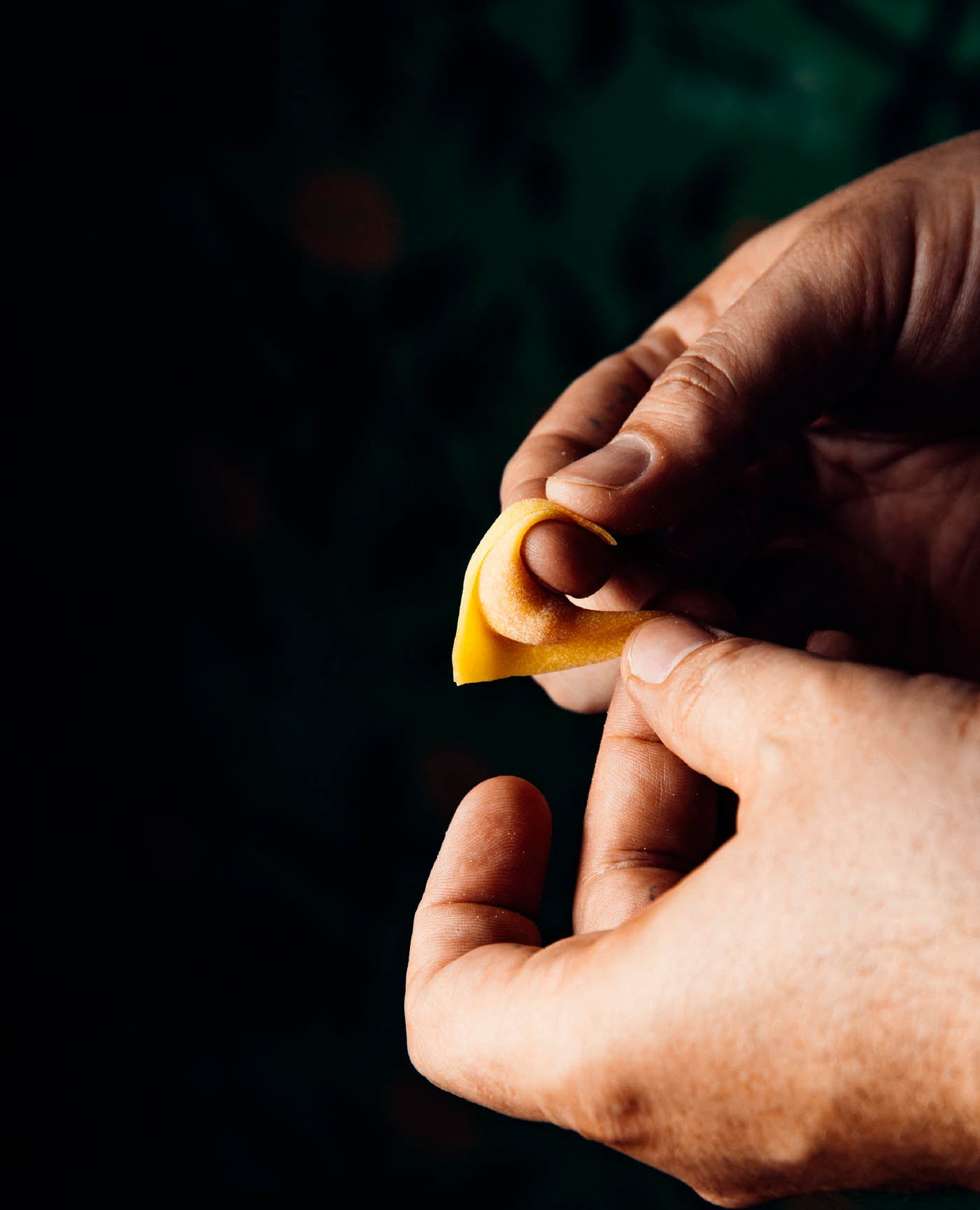
The first time I ate the maestra’s tortellini, back in 2007, it was actually the first time I had ever eaten tortellini—period. I’m not the first chef to have his life changed with a single dish, but the experience of eating tortellini in brodo was more than just a life-altering moment. I had never had anything with such a round, full, balanced flavor. The pasta, filling, and broth were all in perfect harmony and I have been chasing that equilibrium in my own food—and that of others—ever since. That defining moment set the benchmark so high, I’m still chasing that level of perfection.
Tortellini tastes of a time and a place. Perfection is achieved through the simplicity and balance of ingredients and from their traditional assembly. Pasta is kneaded and rolled as it has been for centuries. Filling is crafted to complement the flavor and pliability of the pasta. But where did Bologna’s most famous pasta (tied with tagliatelle) come from?
Any pasta shape that has made it through Italy’s massive cultural shifts of the twentieth century into modern times has a certain amount of lore connected to it. The story I heard about tortellini is an old medieval one, a tale of Jupiter and Venus. The two gods were fighting a great battle on Earth, which wore them out. They took a break to feast and sleep at a nearby inn. Struck by the sheer beauty of these two deities, the innkeeper couldn’t help but peek through the keyhole of their door to observe them in their room—that’s when he saw Venus’s navel, the most beautiful navel he had ever seen. So inspired was he by that seductive navel, he rushed to the kitchen to create something that reflected his new obsession: that something was tortellini. Look at a tortellino upside down and you can see a belly and a navel.
The divine creation of tortellini demonstrates its place in Bologna’s consciousness (if not necessarily its true origin). And, what we do know for sure is, every single tortellino is a fingerprint of its maker. The process is repetitive and, after you’ve done it enough times, each piece will be uniform and completely distinct to the pasta maker.
Once you learn the technique, size is the hardest part to improve upon. My tortellini are considered massive by bolognese standards, but I think they’re the right size for American palates. In Italy, a good sfoglino will show their prowess by making excessively small tortellini. I have huge fingers, so I can’t make the super, super tiny ones. Your tortellini will have your personal signature.
